Ram-Don (aka Jjapaguri) is made by cooking Jjapagetti and Neoguri noodles together in one pot. It’s yummy chewy noodles in a Jjajang sauce that has a hint of spicy udon flavor. This dish appears in the movie Parasite and if you love Jjajangmyeon then you will love this combination.
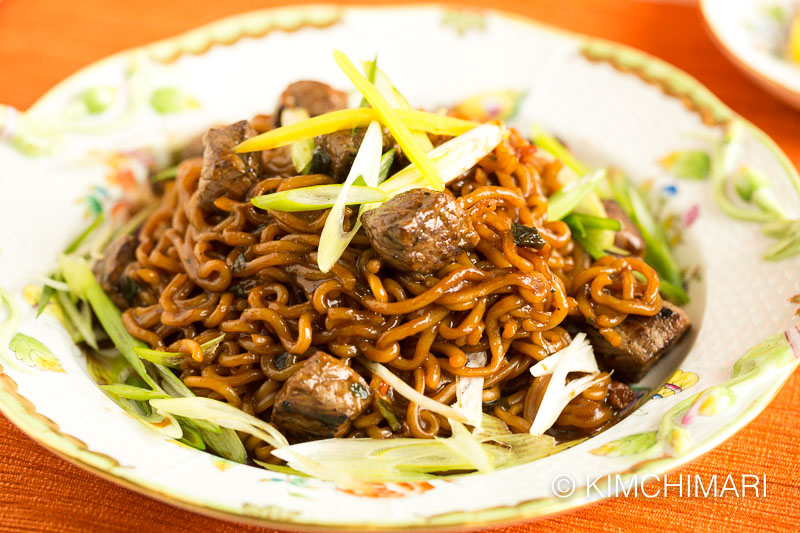
Jjapaguri or Ram-Don is not something that grew up with. I heard about it a few years ago and basically it’s a genius combination of Jjajangmyeon (Chapagetti 짜빠게티) and Spicy Udon (Neoguri 너구리) with no broth but still all the yummy spiciness of the udon broth.
Personally, I cannot eat much of these instant noodles due to my gluten sensitivity but Chapagetti was one of my favorite instant noodles as a kid and is still my daughter’s favorite to this day. I always have to make sure I have a few when she comes home to visit.
I’ve posted a quick recipe of this many years ago in my 3 easy ramen recipes post but I felt it deserved a separate post – partly due to the latest craze of the Korean movie Parasite and how this dish appears in the movie but mainly because I wanted to share some improvements I made to the recipe.
Now, for some reason, this dish was translated as Ram-Don in the subtitle. I guess for Ramen + Udon?? But in Korean, it has always been called as Jjapaguri = Jjapa(getti) + (Neo)Guri.. and so now you know.
Koreans eat the most Ramyeon 라면 (instant noodles) in the world!
Did you know that Koreans eat the most Ramyeon per person, per year? According to data produced in 2015, Koreans eat about 75 ramyeon per person per year whereas Indonesians eat about 50, then #3 is Japan with 43 and #4 is China with 36 per person per year.
Ramyeon (Ramen) wasn’t always a poor man’s food
When Samyang Ramyeon was first introduced in the 60’s, ramyeon cost about 10 cents (which is about 2 dollars at today’s rate) while an everyday Korean meal like Kimchi Jjigae Baekban was 30 cents and Jjajangmyeon was 20 cents at the Chinese restaurants. So, back then, it was actually almost a treat for poor people.
Now, a half a century later, the cost of most ramyeon in Korea is still under 1000 won which is less than a dollar, whereas the average cost of Jjajangmyeon at restaurants is now about 5000 won (according to Korean government study). Which makes ramyeon a very cheap meal. Thus, in recent years, esp. after the 70’s when these noodles started to get mass-produced, many poor students and workers lived on these instant noodles, eating them almost every day.
Ram-Don and Hanwoo Korean Beef in movie Parasite
A cheap Jjapaguri (Ram-Don) dish topped with expensive Korean beef (hanwoo 한우) is a very interesting take by Director Bong. This dish symbolizes the rich Park family trying to glamorize a cheap dish – since just a plain Jjapaguri is not good enough for her son.
Now, is this realistic? Yes, definitely, to some extent. Koreans (especially the ultra-rich) love to put glamor in everything. BTW, honestly, the addition of the steak really does not work all that great in my opinion..but my addition of green onions makes it much better!
Anyway, note that although the subtitle only mentioned adding Sirloin on top, in Korean, the maid is instructed to add Korean Top Sirloin Beef cut (Hanwoo Chaekkeutssal 한우 채끝살) to the noodles. You may not think much if you just think – steak.. but in Korea, the price difference between Hanwoo (Beef from cow raised in Korea) and imported US or Australia beef is pretty huge.
Korean beef is usually about more than twice as expensive as imported beef. According to the Korean Agricultural dept’s study (2013-2017), a Hanwoo Short Ribs cost ₩4791 won per 100g whereas US frozen ribs cost ₩2294 which is less than 1/2 the cost. So naturally, Korean Hanwoo beef is eaten only on very special occasions for most people in Korea unless you are crazy rich like the Parks in Parasite and can easily throw the meat into any dish.
FYI, If you want to learn more about Korean beef cuts, I have a great post here.
So, to stay in line with the ‘ridiculousness’ of this dish,😜 I decided to use the most expensive 🤑plate I have which is this beautiful Hungarian hand-painted dish by Herend (inherited from my mother-in-law) along with our silver chopsticks. My mother-in-law usually lives a very frugal life but she likes to buy the BEST when she travels. And so now, I’m the lucky beneficiary of these beautiful dishes she bought on her trip to Hungary many many years ago. Thank you, mom! 💕
To serve this very cheap Ram-Don in this very very expensive plate.. it’s pretty but kind of ridiculous right?? LOL.. 🤩😍
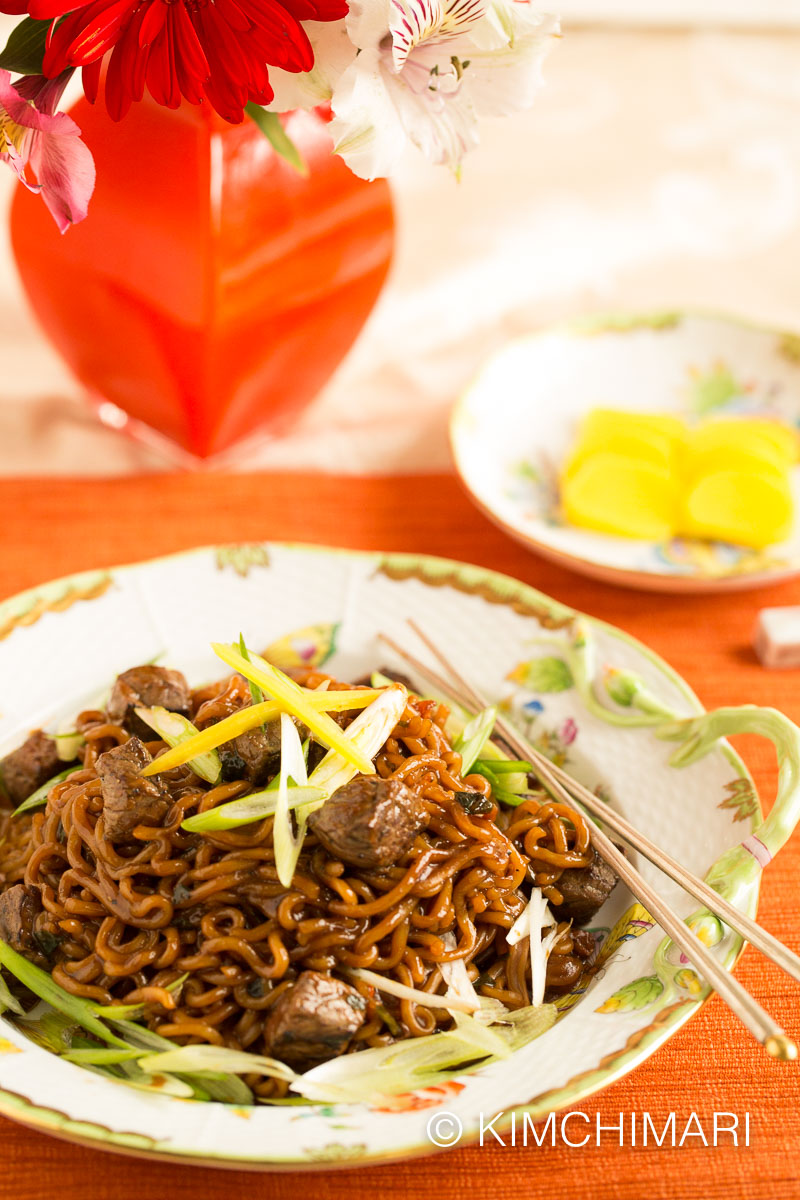
How to make Ram-Don (Jjapaguri 짜파구리)
Servings: 2 Time: 5 min Difficulty: VERY EASY!!
-
Boil 5 cups of water.
-
Slice green onions thinly. Set aside.

steak cubes marinated -
Cut steak into small cubes. Season lightly with some mirin, sesame oil, sea salt and black pepper or just salt and pepper.
-
Heat a non-stick frying pan and cook steak cubes for few minutes until it’s cooked to your desired doneness. Set aside.
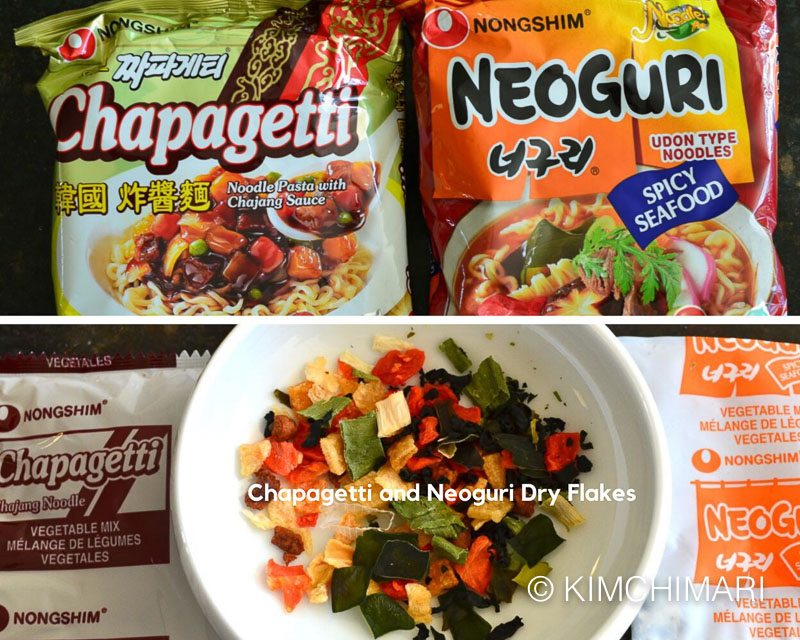
Instant Noodle packets -
Open noodle packages and dry flakes and soup packets.
-
When water boils, add both noodles to pot and boil for 2 min.
-
Drain away water (about half) from pot, still leaving enough water to just barely cover the noodles. Return pot with noodles to heat. Lower heat to medium-low and simmer.
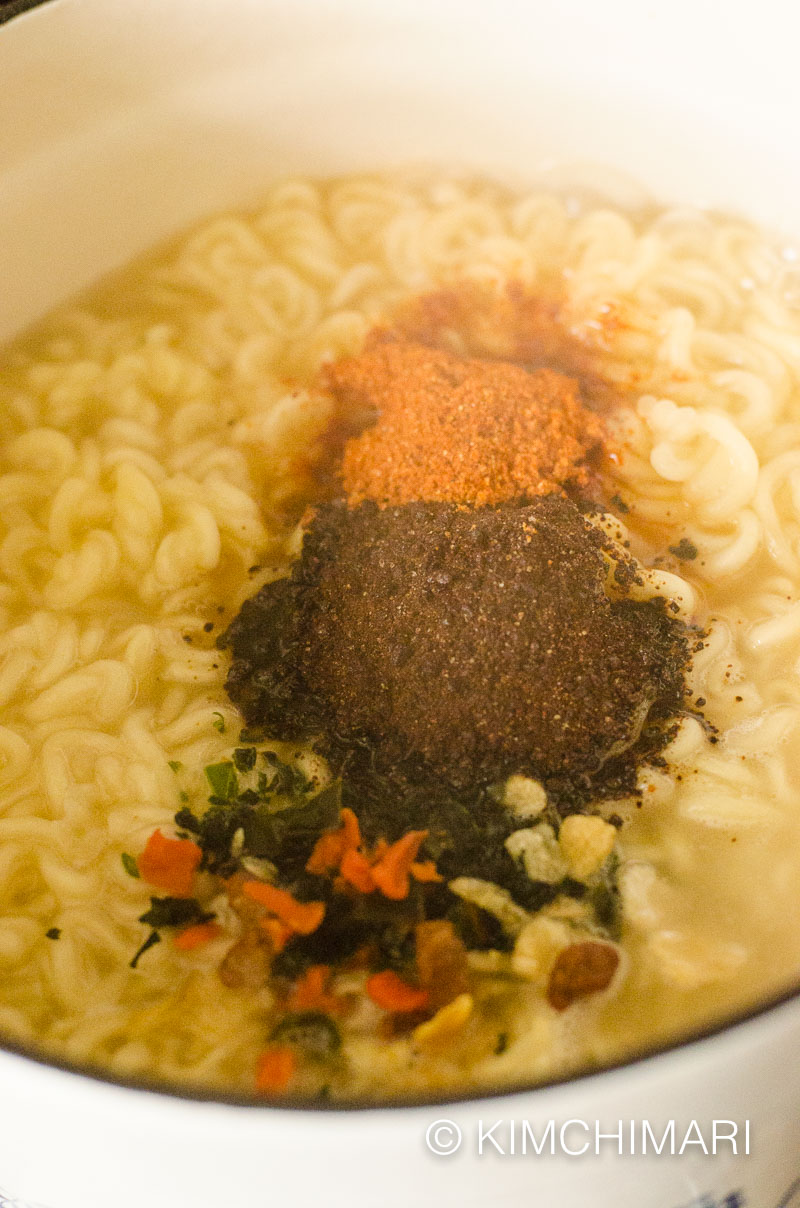
Noodles with soup powder and dry flakes added -
Open dry flakes packet from BOTH packages and add to pot. Add all of Chapagetti seasoning packet and 1/2 of Neoguri seasoning packet (add more if you like it more spicy and salty).
-
Keep mixing until noodles are all well coated.
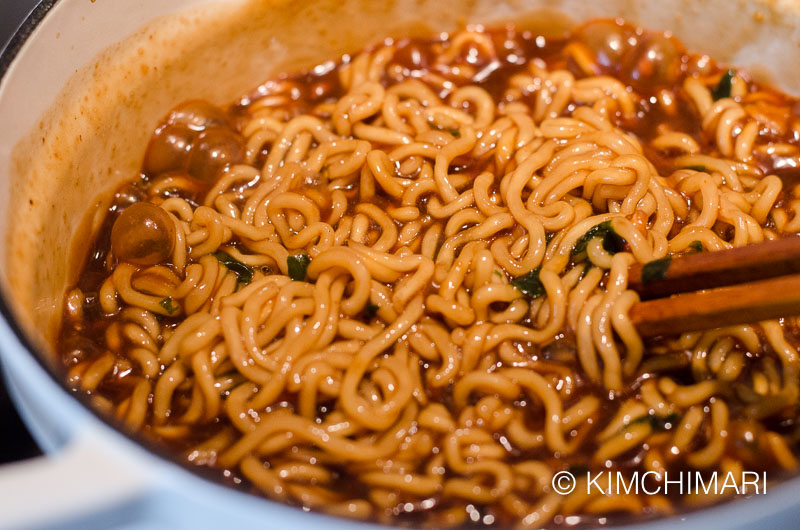
jjapaguri ram-don cooking in pot -
Simmer noodles for another 2-3 min until most of the liquid is gone and noodles are well coated in sauce.
-
Add cooked steak cubes and also the oil from Chapagetti. Stir. Immediately transfer to a dish.
-
Plate noodles and top with sliced green onions. Serve with some Danmuji (pickled yellow radish).
Well, I hope you enjoy this easy quick and delicious dish! With or without the steak.😝
XOXO ❤️,
JinJoo
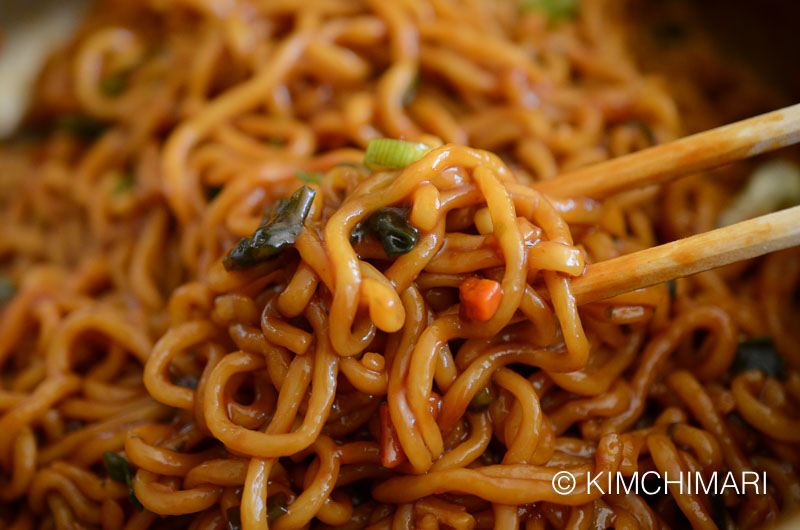
Ram-don (jjapaguri) noodles 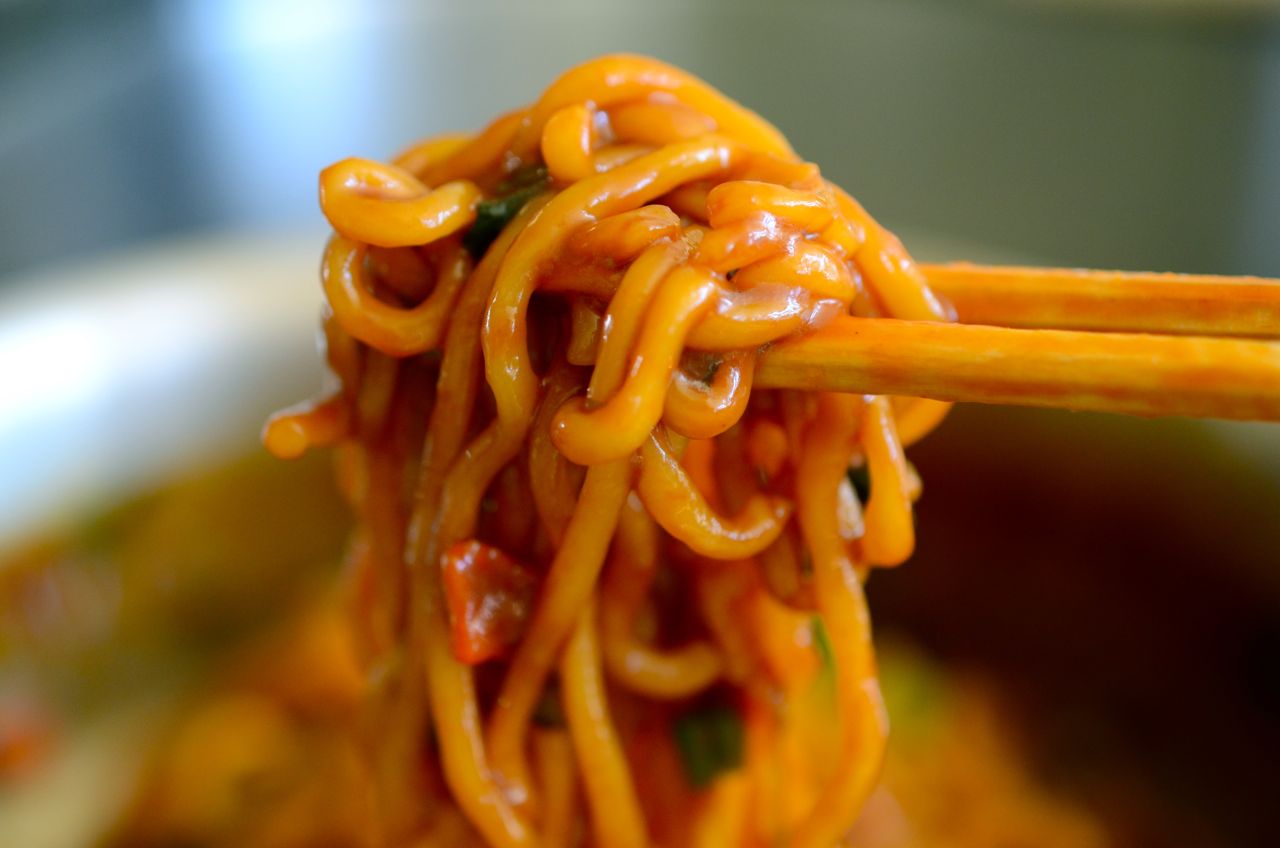
Jjapaguri noodles close-up
☆ Did you make this recipe? I hope you can give me a 5 star rating below!
You can also FOLLOW ME on FACEBOOK, PINTEREST and INSTAGRAM or join my FACEBOOK GROUP to see, ask and share everything about Korean food with others just like you!
Ram-Don (Jjapaguri) Noodles with Steak from movie Parasite
Ingredients
- 1 Chapagetti (Jjapagetti)
- 1 Neoguri
- 5 cups water
- 2 green onions
- 4 oz sirloin steak
Instructions
- Boil 5 cups of water.
- Slice green onions thinly. Set aside.
- Cut steak into small cubes. Season lightly with some mirin, sesame oil, sea salt and black pepper.
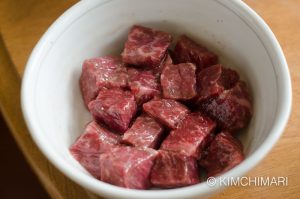
- Heat a non-stick frying pan and cook steak cubes for few minutes until it's cooked to your desired doneness. Set aside.
- Open noodle packages and dry flakes and soup packets.
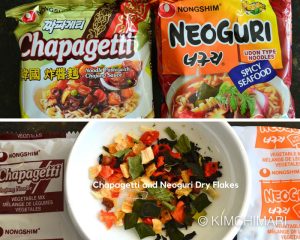
- When water boils, add both noodles to pot and boil for 2 min.
- Drain water (about half) from pot, still leaving enough water to so it comes up to just below the top of the noodles. Return pot with noodles to stove. Turn on to medium-low and simmer.

- Open dry flakes packet from BOTH packages and add to pot. Add all of Chapagetti seasoning packet and 1/2 of Neoguri seasoning packet (add more if you like it more spicy and salty). Keep mixing until noodles are all well coated in sauce.
- Simmer noodles for another 2-3 min until most of the liquid is gone and noodles are well coated in sauce.
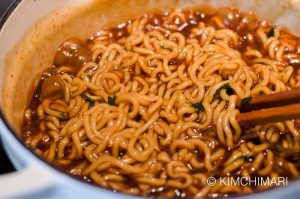
- Right before turning off the heat, add the cooked steak cubes and also the oil from Chapagetti. Stir. Immediately transfer to a dish.
- Plate noodles with the steak cubes and top with sliced green onions. Serve with some Danmuji (pickled yellow radish).
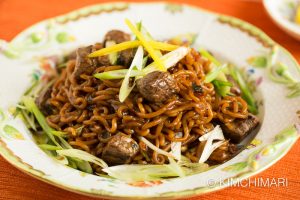
Equipment
- pot
- frying pan
Tips & Notes:
- Jjapaguri is best eaten right away. Do not leave it too long, noodles will soak up the sauce and become unpleasant to eat.
- adding the steak is optional - I mainly added it because of how it was done in the movie. It's totally fine without the steak.
- And if you live in Korea, buy Hanwoo Chaekkeussal 채끝살 for the steak. Outside of Korea, buy Wagyu beef if you'd like but really not necessary.. 😉
- don't overcook the noodles
- right amount of water is important - leave enough water to a level just below the noodles and then continue to simmer until you just have the think sauce left.
- serve with Danmuji and Kimchi
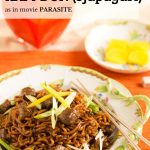
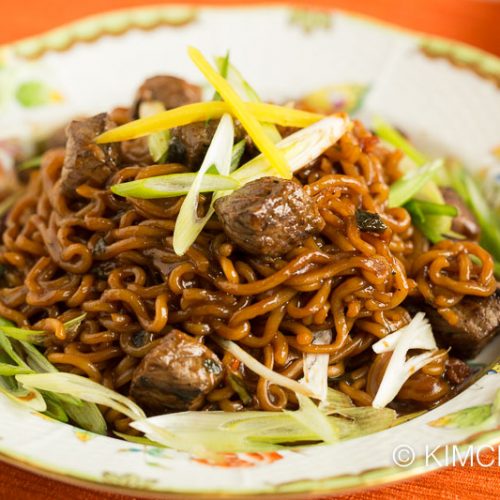
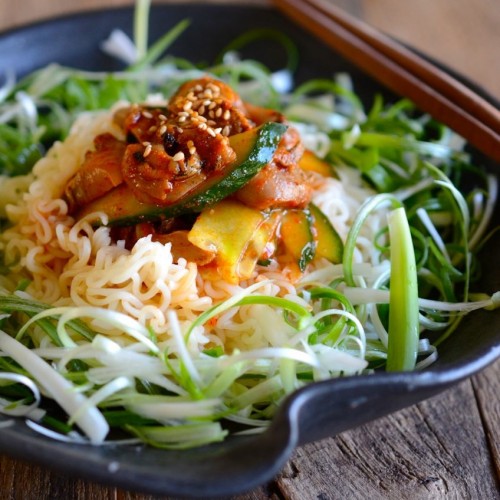
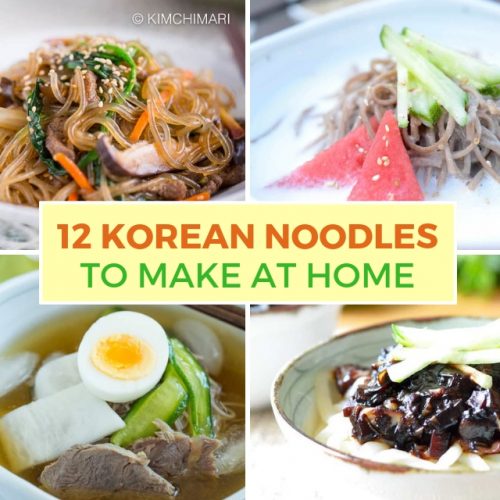
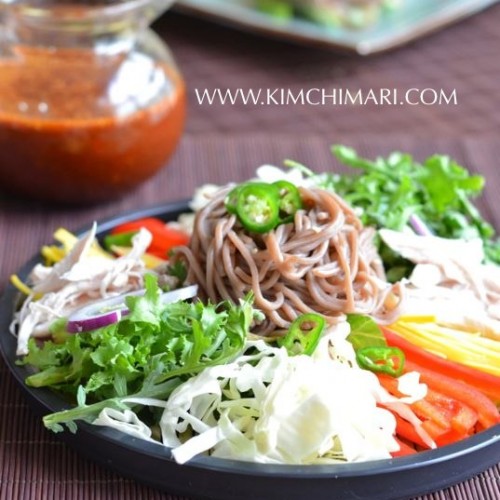
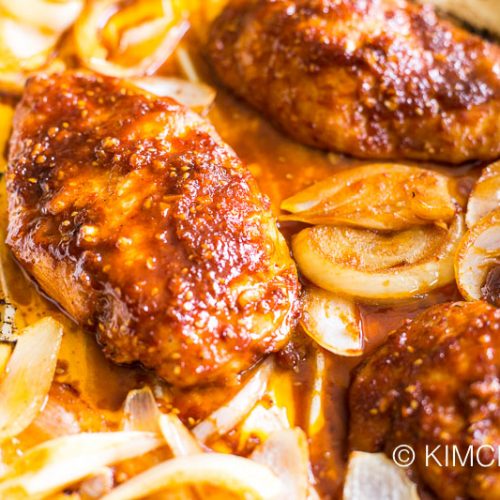
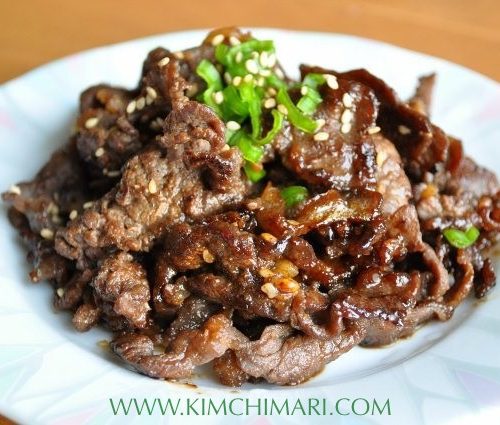
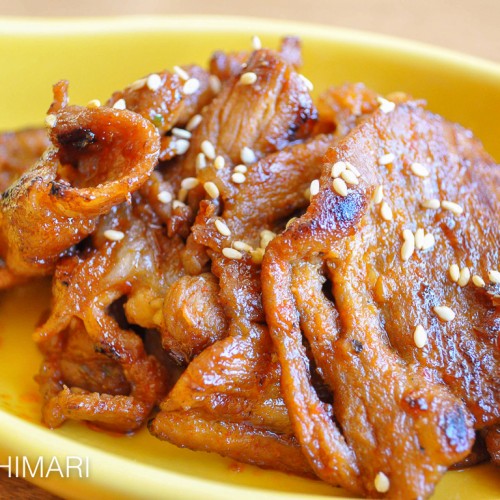
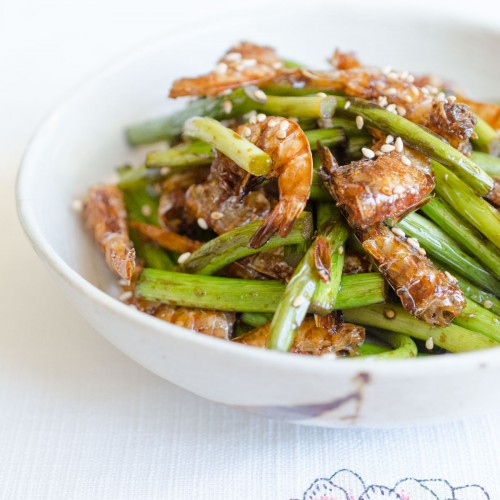
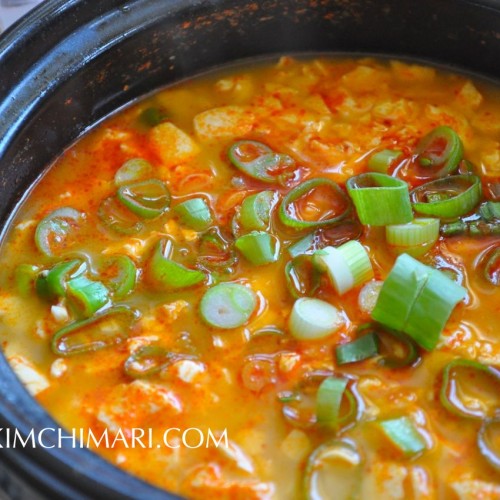
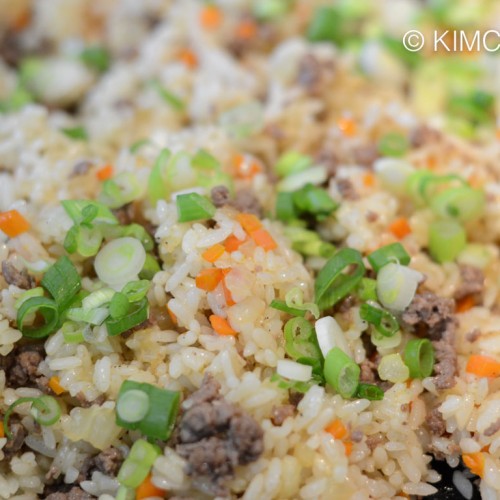
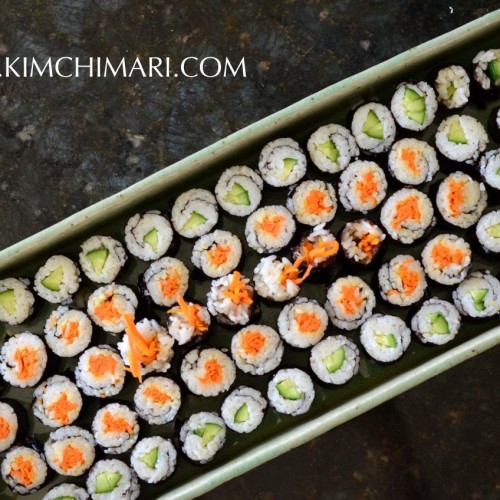
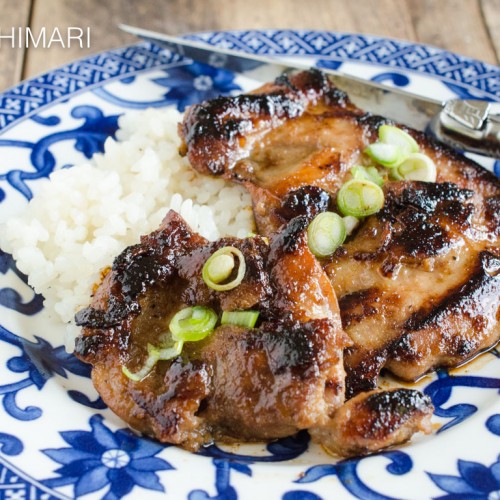
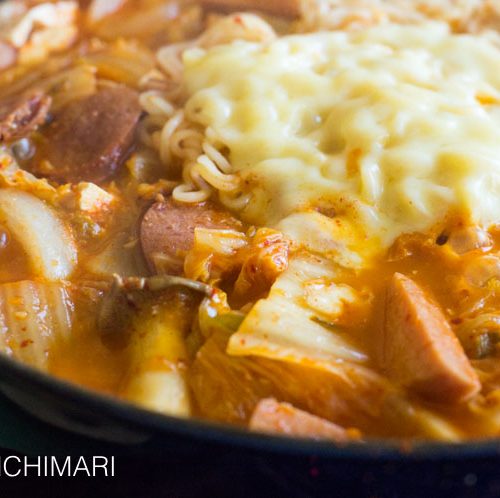
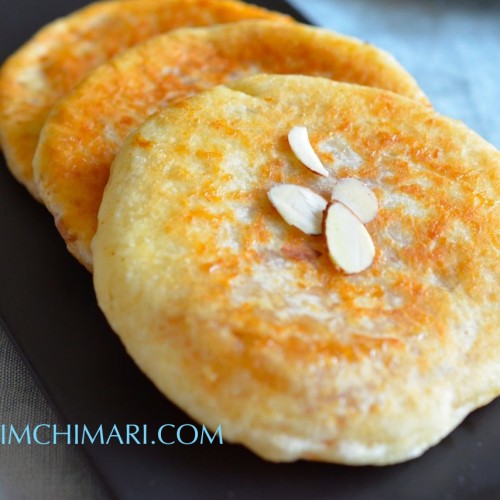






Yeah, Parasite is the reason why I want to do this XD
Great!! Enjoy!
Thumbs up!
It’s good and easy to follow
So glad you liked it! And thank you so much for the 5 star rating!! 😍
I’m making this for book club as we read the Island of Sea Women for March reading. Looks delicious so I will let you know!
What can I serve as a dessert that is easy or I can buy? Thank you!!
Oh – that sounds wonderful!! The only thing – make sure you time it right. It can’t sit for long, then the noodles will absorb all the liquid and get pasty. It’s best served right after it’s cooked. For dessert, I have this post that has different things to choose from, but in your case, I would recommend that you make the Oven baked rice cake https://kimchimari.com/sweet-red-bean-rice-cake/ – you can bake it in advance and it will be delicious! Here’s my list of Korean desserts https://kimchimari.com/best-korean-desserts-recipes/ . Have fun!
I love your explanation about the difference between how this dish is portrayed in the movie versus the way I remember it as a kid. Just like you, I was a bit confused about the Ramdon translation. Also thanks for the tidbit about the Korean beef.
I can’t eat this dish as described because of my gluten sensitivity but maybe I can try a GF free version using the directions provided here… What sort of spices do you think I can sub for the dried ramen flakes?
I also would like to know this as I am Hluten free as well.ty. I found a great brown rice ramen noodles to sub for that.
Well, if the soup powders from the 2 instant noodles were gluten free I think you can simply just substitute the noodles. However, if the powders are not gluten-free, the only way I can think of is to basically make my Jjajangmyeon sauce from https://kimchimari.com/jjajang-myeon/ but make it more spicy and garlicky by adding extra red chili powder and garlic powder. I hope that works for you.
I”d say toss out the ramen noodles (they’re cheap enough) but keep the spice packets and use rice noodles. Also, our local high-end organic market carries gluten free ramen and udon noodles, so I know they are available. Good Luck!!